chinkapin oak tree facts
Back Print results Print PDF 301 KB. Although widely distributed in Ohio it is most common on the limestone soils of the southwestern part of the state.

Chinkapin Oak Tree On The Tree Guide At Arborday Org
Chinkapins are not small trees growing to 80 feet 24 m in the wild and 50 feet 15 m tall when cultivated.

. Grows in limestone soils a rarity amongst oaks. The water chinquapin is another name for the American lotus Nelumbo lutea. In Kansas it occurs mainly on limestone soils rocky riverbanks and usually on higher ground than Bur oak.
Chinkapin oak a Central Texas native is a medium-sized tree reaching 40 to 50 feet tall and just as wide in most. An attractive oak with toothed leaves like those of a Chestnut tree. 40 - 50 122m - 152m Excellent shade tree adapted to limestone soils.
As part of the group of white oaks they bear very pale white bark. 12 rows Chinkapin oak Quercus muehlenbergii is not a very commonly grown landscape tree which is a. Open-grown trees have short trunks with many branches that form a wide well-rounded crown.
It tends to have an open rounded. New England to northeastern Mexico on limestone outcrops. It is sometimes thought of as a weed tree but it may be useful to bind soil along roadsides and rocky slopes.
Occurrence and abundance of Chinkapin oak appear to be related to soil reaction and texture. It inhabited the rocky upper slopes and ridge tops of the Ozark and Ouachita Mountains in Missouri Arkansas Oklahoma and Eastern Texas see range maps. QuercusThe species was often called Quercus acuminata in older literatureQuercus muehlenbergii often misspelled as muhlenbergii is native to eastern and central North AmericaIt ranges from Vermont to Minnesota south to the Florida panhandle.
Ozark chinquapin are also found in northern. Zones 4 to 6. The dwarf chinkapin oak Quercus prinoides is also known as scrub chestnut oak a small shrub that grows 2 to 10 feet maximum 18 feet with a trunk diameter of 1 to 4 inches maximum 10 feet.
Chinkapin oaks are found on dry limestone outcrops in the wild and perform well in alkaline soils. Native habitat. He light gray or silvery-white bark of this tree resembles that of the White Oak.
Deciduous Caducifolio Artwork Robert OBrien. WE ARE LOCATED AT. Quercus muehlenbergii the chinkapin or chinquapin oak is a deciduous species of tree in the white oak group Quercus sect.
Its glossy coarsely-toothed leaves are yellow-green and small compared to most oaks. CHINKAPIN OAK Quercus muehlenbergii. As part of the group of white oaks they bear very pale white bark.
Foliage is green and shiny turning to yellow-orange in fall. It has one nut in a burr that opens into two halves which gives the tree a. Features simple oblong to oblong-lanceolate leaves that are dark yellowish green coarsely toothed and 46½ in length.
Chinkapin oak Quercus muehlenbergii Engelm Click on the images help you identify an Chinkapin oak. Chinkapin oak is a medium-sized tall tree often with large low branches and a narrow irregular crown. Gray bark and gnarled branch structure on old specimens.
Deciduous shade tree with a pyramidal growth pattern as a young tree becoming more rounded as the tree matures. Chinkapin or chinquapin is a small tree found throughout the southeastern United States. The breadth of the open rounded canopy tends to approximate the height of the tree.
Chinkapin oak is a member of the white oak group with chestnut-type leaves. Historically this prominent oak not only provided sturdy fencing to the pioneers especially in states like Ohio Kentucky and Indiana but also served as a primary source of fuel for steamships traveling along the Ohio River at the turn of the 20th. 813 teeth per side.
The Ozark chinquapin Castanea ozarkensis sometimes called the Ozark chestnut is a drought tolerant hardwood tree that reaches up to 65 feet tall and 2-3 feet in diameter. Distinctively coarsely serrated or wavy like sawteeth along entire margin. Muehlenbergii see white oak.
Adapts to many soil conditions. Interesting facts Early pioneers used chinkapin oak fences so much that they went out for miles however once farming was down the fences. The chinkapin oak which is a member of the white oak family is one of the several large oaks native to the United States.
Leaves are alternate simple 48 inches long 13½ inches wide broadest near the base or above the middle ending in a pointed tooth but no bristles or tiny spines on the edges. Excelente árbol para proporcionar sombra adaptado a los suelos de piedra caliza. The tree grows well on the rich soils of bottomlands but it also is found on drier hillsides.
Fall color varies from yellow. Grows in a rounded shape. Chinkapin oak is a medium-sized tall tree often with large low branches and a narrow irregular crown.
Because this tree has a diverse range its form varies with location. Their trunks can grow to 3 feet 9 m in diameter. With full sun and ideal conditions Ozark Chinquapin trees will produce nuts in four years The nuts are so nutritious and sought after by wildlife that they are preferred over white oak acorns.
Yields 1 round acorns that mature in the first year. The bush or Sierra evergreen chinquapin Chrysolepis sempervirens is a small spreading mountain shrub of western North America and was also formerly of the genus Castanopsis. Chinkapin oak is named because of the resemblance of the leaves to the Allegheny chinquapin Castanea pumila a relative of American chestnut C.
The chinkapin oak can reach a height of 40 to 50 feet in the landscape and 70 to 80 feet in. The wood is very rot resistant and trunks of the trees from the 1950s can occasionally still be found. New root pruning and fertilization techniques in nursery production have made oaks easier to transplant and have given them.
Height can reach 80 to 100 with a diameter of 36 the average size of Minnesota trees is often smaller than this however. With enough room on an optimal growing site it can grow to a height of 60 feet and a spread of 60 feet at maturity. Chinkapin oak is native to the Midwest where it is often found as a specimen planting or as part of a grouping of trees in parks and large areas.
Forest-grown trees are tall with narrow. Chinkapin oak grows in various soil condition such as mildly acidic soil and alkaline soil dry and moist4. The breadth of the open rounded canopy tends to approximate the height of the tree.
The chinquapin oak refers to Quercus prinoides and to Q. Because this tree has a diverse range its form varies with location. Quercus muehlenbergii or Chinkapin oak is native to much of the Eastern United States and as far west as Central Kansas and Southwest Texas.
Distinctively coarsely serrated or wavy like sawteeth along entire margin. Chinkapin oak grows in various soil condition such as mildly acidic soil and alkaline soil dry and moist4.

Chinkapin Oak Tree On The Tree Guide At Arborday Org
Chinquapin Oak Details Texas Smartscape Plant Database
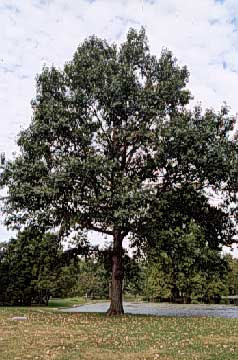
Chinkapin Oak Department Of Horticulture
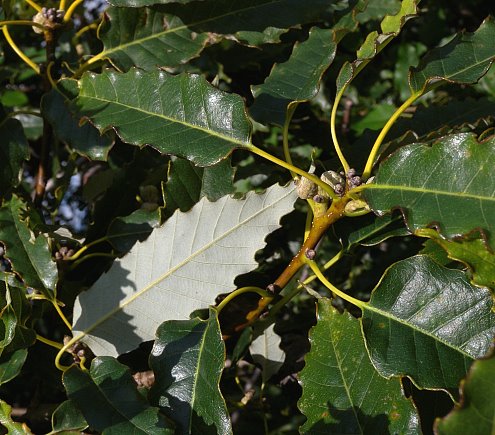
Chinkapin Oak Quercus Muehlenbergii
Chinkapin Oak Tree Knowledge Base Lookseek Com
/chinkapin-oak-growing-guide-5202085-hero-349ff2a64aed416d96db090e9c96e6c9.jpg)
Chinkapin Oak Care And Growing Guide

Chinkapin Oak Department Of Horticulture

Chinquapin Oak Tree Dallas Fannin Tree Farm Frisco Tx

Chinkapin Oak Tree On The Tree Guide At Arborday Org

Tree Species Profiles Top Rated Shade Trees Chinquapin Oak Quercus Muehlenbergii Arborilogical
:max_bytes(150000):strip_icc()/chinkapin-oak-growing-guide-5202085-03-318dc783648c4c9db3db0635af31320c.jpg)
Chinkapin Oak Care And Growing Guide

Chinkapin Oak Natural Resource Stewardship
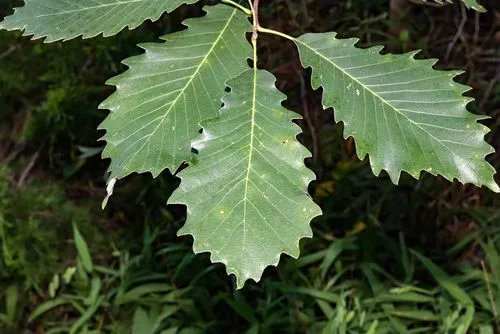
42 Interesting Chinkapin Oak Tree Facts Revealed
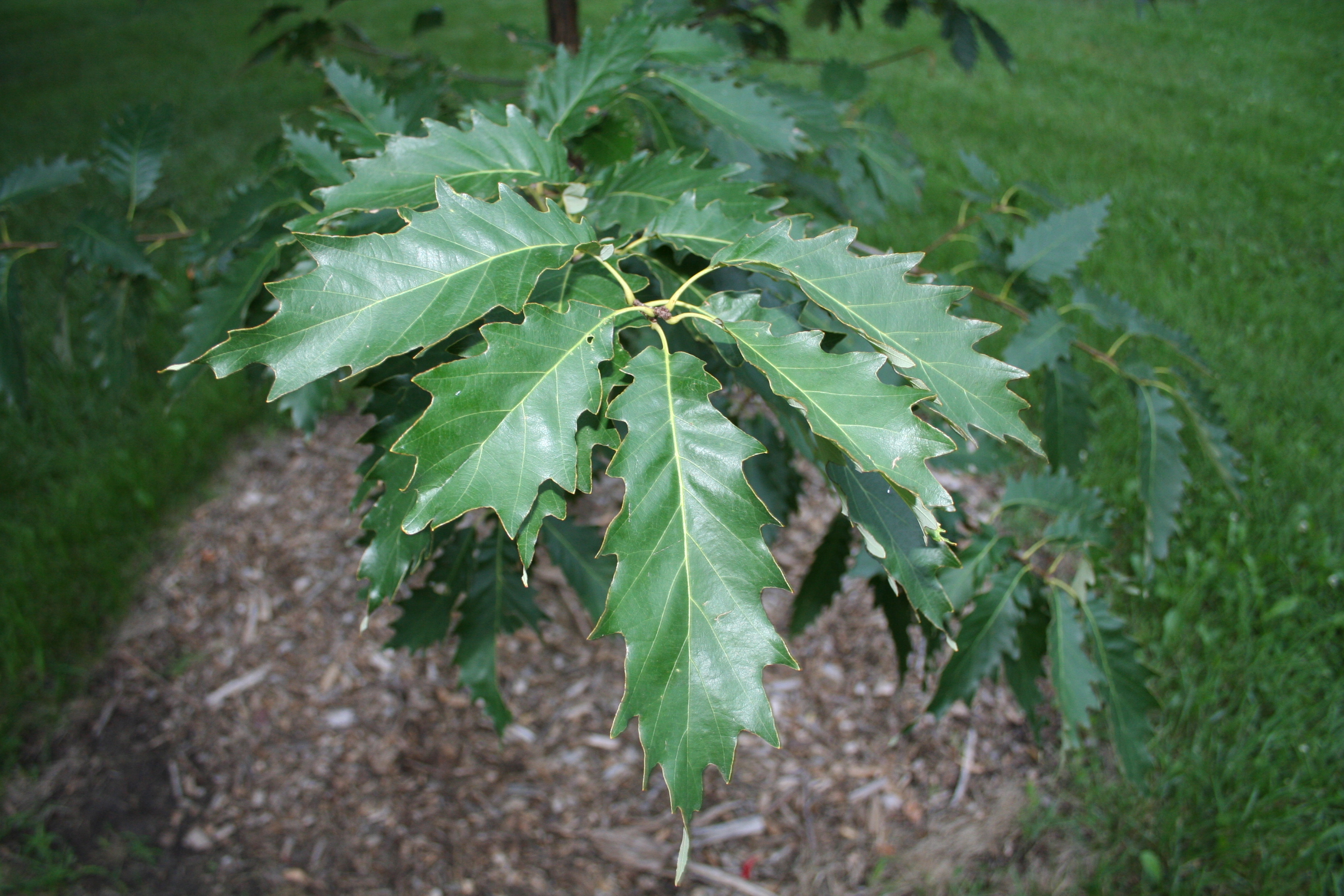
Oak Chinkapin Nebraska Forest Service

Care For Chinkapin Trees Chinkapin Oak Information And Growing Tips
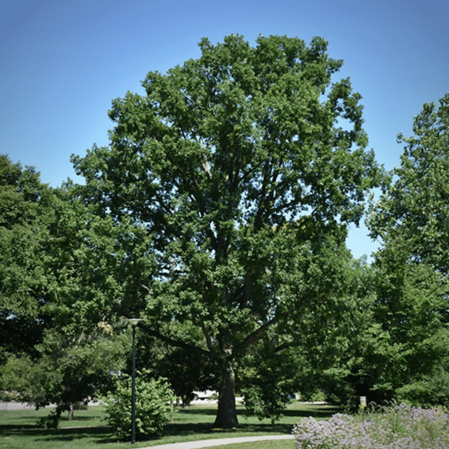
Trees Adventure Science Center


